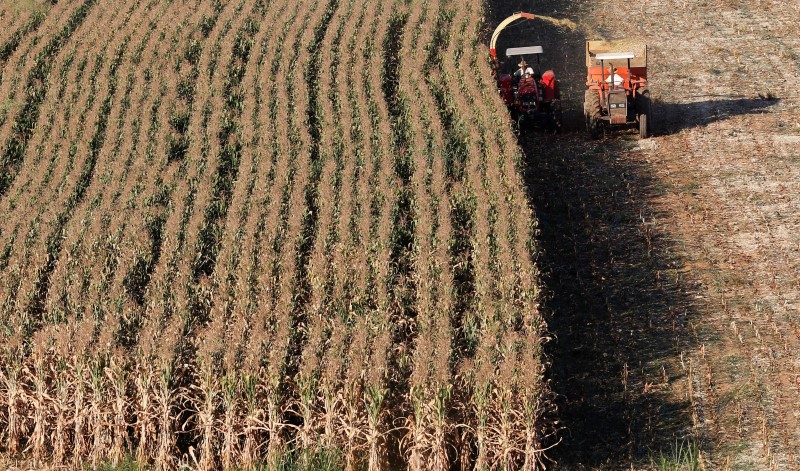Investing.com - U.S. corn futures regained strength on Wednesday, one day after plunging more than 4% after the U.S. Department of Agriculture raised its outlook for domestic supplies and spring plantings.
On the Chicago Mercantile Exchange, US corn for May delivery tacked on 1.62 cents, or 0.43%, to trade at $3.7863 a bushel during U.S. morning hours.
A day earlier, US corn for May delivery tumbled 18.2 cents, or 4.63%, to close at $3.7620, the lowest level since March 20. It was the biggest one-day loss in 18 months.
The USDA said on Tuesday that U.S. corn inventories on March 1 totaled 7.745 billion bushels, above expectations for 7.630 billion bushels and 11% higher than last year.
The agency also projected U.S. farmers would plant 89.199 million acres with corn in 2015, surpassing forecasts for 88.735 million but down from 90.597 million in 2014.
Elsewhere on the Chicago Board of Trade, US wheat for May delivery inched up 2.77 cents, or 0.54%, to trade at $5.1438 a bushel. On Tuesday, wheat sank 18.4 cents, or 3.49%, to settle at $5.1160.
The USDA forecast domestic reserves on March 1 at 1.124 billion bushels, above expectations for 1.143 billion. Last year, wheat stocks stood at 1.057 billion.
The agency predicted 55.367 million acres will be seeded with wheat, down from 56.82 million last year. Analysts had forecast plantings of 55.61 million acres.
Meanwhile, US soybeans for May delivery advanced 4.92 cents, or 0.51%, to trade at $9.7813 a bushel after touching a daily high of $9.8338, the most since March 25.
US soybeans for May delivery rose 5.4 cents, or 0.57%, on Tuesday to end at $9.7320 after the USDA said that domestic soybean stocks at the start of March totaled 1.334 billion bushels, 34% higher than last year but less than the 1.345 billion bushels analysts predicted.
According to the agency, growers in the U.S. will sow 84.635 million acres of soybeans this year, below expectations for 85.9 million but up 1.1% from a year earlier.
Corn is the biggest U.S. crop, followed by soybeans, government figures show. Wheat was fourth, behind hay.
